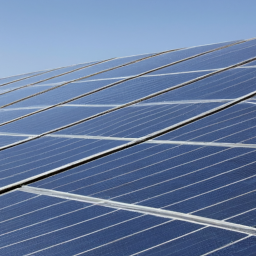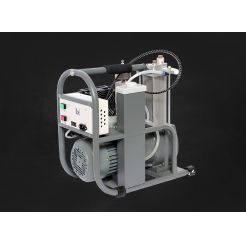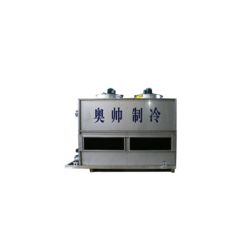Li-ion Battery Coin Cell Lab R&D Line Assembly Making Equipment
Product Name: Li-ion Battery Coin Cell Lab R&D Line Assembly Origin:China Brand:ACEM Warranty: One Year warranty with lifetime support. Coin cell battery lab assembly line is mainly used in schools, research institutes and enterprise laboratories for battery material research and development and material testing, etc.
Product Description
Li-ion Battery Coin Cell Lab R&D Line Assembly Making Equipment
Coin cell battery lab assembly line is mainly used in schools, research institutes and enterprise laboratories for battery material research and development and material testing, etc.
Electrode Sheet Preparation:
● Preparation of active materials by sintering in a rotary furnace.
● Mix and grind the prepared materials.
● Vacuum mixing of the prepared positive and negative electrode mixtures.
● Measure the viscosity of the slurry when its coating effect is better with a viscometer and record it so that the battery slurry can be adjusted to this viscosity in the next experiment.
● Using a slurry filtering device to filter out all kinds of hard particles in the slurry with a particle size of not less than 124 microns.
● Coat the positive and negative electrode materials on the collector separately and dry them.
● The dried positive and negative electrode sheets are rolled to reduce the thickness and increase the density.
● Move the electrode sheet into a drying oven for further drying.
Battery Encapsulation:
● The positive and negative electrode sheet and separator paper, cut into small round pieces of specified diameter.
● The cut pole piece, separator paper and electrolyte, battery shell and other accessories into the glove box.
● In accordance with the order of stacking from bottom to top to assemble the battery and inject electrolyte: negative shell > flat pad + the appropriate amount of electrolyte > lithium metal sheet + the appropriate amount of electrolyte > a layer of separator paper + the appropriate amount of electrolyte > positive electrode sheet + the appropriate amount of electrolyte > flat pad + the appropriate amount of electrolyte > the shrapnel > the positive shell
● Encapsulate the battery on the encapsulation machine
Battery test
● Use battery analyser testing machine to test the battery's electric capacity, and cycle aging.
● Measure the size of internal resistance of the battery with internal resistance tester.
|
Related Machine for Coin Cell Preparation |
|
|
No. |
Machine |
|
1 |
|
|
2 |
Vacuum Mixer ACEM-MSK-SFM-16 |
|
3 |
Film Coater Machine ACEM-FCM-250D |
|
4 |
Roll Press Machine ACEM-RPM-M |
|
5 |
Punching Machine ACEM-CP60 |
|
6 |
Weighing device ACEM-BCE |
|
7 |
Glove Box Machine ACEM-GB-V1 |
|
8 |
|
|
9 |
Coin Cell Crimping Machine ACEM-CCM-H20 |
|
10 |
Split Test Cell ACEM-HSTC |
|
11 |
Battery Tester Machine |
|
12 |
Email: Katia@acemenergy.com Whatsapp: +86 13960646144 |
Cathode material
Anode material is the most core component material of lithium-ion battery, and it is also the key factor to determine the performance of the battery, and its advantages and disadvantages directly affect the performance of lithium batteries (e.g. energy density, thermal stability, safety, etc.). The cathode materials of lithium batteries usually use lithium compounds, such as lithium iron phosphate (LiFePO4), lithium manganate (LiMn2O4), lithium cobaltate(LiCoO2), and ternary lithium batteries(NMC).
Anode electrode material
Anode electrode material: Negative electrode is carbon based material or non-carbon based material. Negative electrode material is an important part of lithium battery, which is the carrier of lithium ion embedded and discharged in the process of battery charging and discharging, and plays the role of energy storage and release. The anode material has an important impact on the first week efficiency, cycle performance, safety performance, and fast charging and discharging ability of lithium-ion power battery.
Separator
Separator is an important part to prevent direct contact between positive and negative electrodes, and common separator materials include polyolefin or polymer film.
Electrolyte
Electrolyte is an important component in lithium batteries, which is responsible for the transmission of lithium ions. General electrolyte is composed of organic solvent and lithium salt, such as carbonate solvent and lithium salt (e.g. LiPF6).
Coin Cell casing
The cell casing is the outer shell that protects the internal structure of the cell, and is usually made of metal materials, such as aluminium or steel.

Email: Katia@acemenergy.com
Mob.: +86 139 6064 6144
WeChat: +86 139 6064 6144
Skype: Katia@acemenergy.com
Whatsapp: +8613960646144
Add.: No.101, Guyan Road, Xiang'an District, Xiamen City, Fujian Province, China





